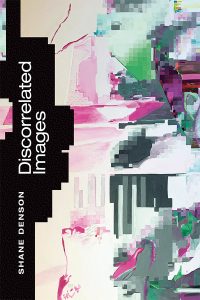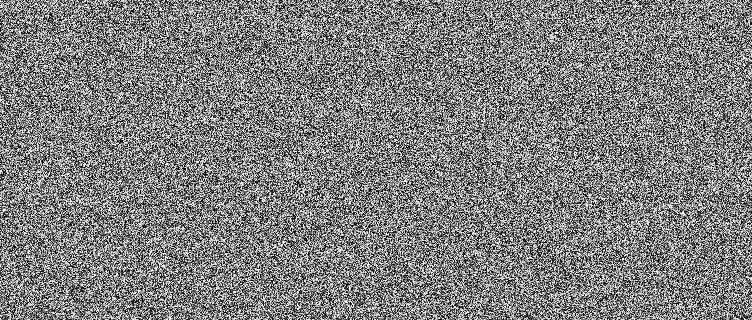 Shane Denson's new book Discorrelated Images has captured my attention in recent weeks. It's a fascinating investigation into the contemporary image, with an emphasis on cinema but spilling over into other forms of image-making.
Shane Denson's new book Discorrelated Images has captured my attention in recent weeks. It's a fascinating investigation into the contemporary image, with an emphasis on cinema but spilling over into other forms of image-making.
Denson has carved out a niche for himself in what has become known as "post-cinema," that is, a new phase of cinema starting in the late Twentieth Century concurrent with digitization, postfordism, neoliberalism, and related developments.
Indeed, in a co-edited collection simply titled Post-Cinema, Denson has helped assemble an impressive collection of chapters that tackle contemporary image culture from a variety of angles. Such discourse had already began to pick up speed in cinema studies in the early 2000s (and also prior, in discussions of postmodernism overall going back to the 1980s and before), coalescing eventually around Steven Shaviro's book Post Cinematic Affect in 2010. Denson and Leyda's Post-Cinema is a veritable who's-who of film and digital studies, with texts from Shaviro as well as figures like Lev Manovich, Richard Grusin, Patricia Pisters, Vivian Sobchack, Mark Hansen, and many others. This is the kind of volume that helps define and galvanize scholarly discourse, particularly when the subject matter is still so new and deserving of scrutiny, as is the case with digitality.
Continuing on from Post-Cinema, the gist of Denson's argument in Discorrelated Images is that images have changed significantly in recent years, so much so that the basic contract of visual representation -- that images produce more or less coherent reproductions of what they represent -- no longer applies. While such a contract has been endlessly critiqued and corrupted over the last several decades within theories of visuality and representation, Denson's particular contribution has to do with the devolution of the digital image down toward the level of affect, sensation, and somatic reflexes, particularly via an aesthetics of incoherence, entropy, and chaos. (To be sure, the industrialization of affect has a long history, described in detail by Bernard Stiegler, Siegfried Kracauer, and many others; for his part, Denson's particular iteration is characterized by a certain millennial tension.) Continuing on from Bordwell's notion of "intensified continuity" and what Matthias Stork called "chaos cinema," Denson goes a step or two further, showing that coherent diegetic spaces are no longer required in cinema, indeed that the very notion of diegesis has lost most of the significance it once had.
The term "discorrelated" is particularly appealing to me, not least because it entails (or perhaps indicts) philosophical discussions around "correlationism," as begun by Quentin Meillassoux in his influential book After Finitude published first in French in 2006. Denson's book will, I predict, help migrate these discussions from philosophy directly into media theory, a discipline arguably better equipped to consider questions of representation, analogy, and reproduction.
Instead of simply reviewing or critiquing Denson's book, I want to take it as a prompt, an invitation to continue beyond the rich set of references he provides. Denson already furnishes a dazzling menagerie of discorrelated images. Some of them are about sensory overload. Some are about the "seamfulness" of the image, its inability to hide the seams and gaps of its own construction. Some are about the lack of continuity in montage, and the bodily disorientation that such discontinuity might trigger. Some are about the disconnect between the diegetic and nondiegetic parts of the image. We have, then, a sort of zoology of discorrelation, a rough arrangement of the kinds of wild creatures that populate the contemporary landscape of images.
Why not min-max this logic and push the variables to the limit? Filmmakers like Michael Bay or Neveldine/Taylor might luxuriate in disorientation. But Bay is child's play compared to the many possible varieties of discorrelated images. So let's begin by considering the image strictly as digital information. Digital images consist of mathematical values located at specific addresses. For static images, grids typically provide the addresses. And for moving images, blocks of pixels are located within the frame, and then relocated according to movement transformation data (and subsequently refreshed once they get too off kilter). In either case, though, the digital image consists in bits of code placed at specific locations. The image that Denson ends the book with, Grégory Chatonsky's "The Watson Emotion Watching Vertigo" is a perfect example of a digital image; I frequently prefer these "non-pictorial" images of alphanumeric text because they better express the essence of the digital image: no real picture, just numbers arranged in a rectangle.
Streams of alphanumeric characters are already fairly alienating to most people. Yet we can go much further. Beginning with digital information, it's possible to accentuate discorrelation by min-maxing various aspects of the image. We know from Claude Shannon that the information in a signal is based on the amount of decision possible within the encoding scheme. Following this, a monochrome image has less information than a highly textured one. (This is confirmed practically as well as experientially: a monochrome color field will compress to a much smaller file than a highly textured one; the monochrome will quite literally contain fewer bits.) Monochromes are lower frequency, while texture is high frequency. And hence monochromes are less discorrelated, while high-texture images are more discorrelated -- at least from the perspective of information theory. With this in mind, let's construct an image from scratch, a moving image where every pixel is moving maximally within a binary gamut. We can label this a "maximally discorrelated" image vis-a-vis binary information:

In After Finitude, Quentin Meillassoux developed what he called the principle of unreason. “Everything could actually collapse” (53), he proclaimed. "There is no reason for anything to be or to remain the way it is; everything must, without reason, be able not to be and/or be able to be other than it is" (60). Given his interest in this sort of creeping chaos -- or "hyper-Chaos" (64) as he put it -- we might give the name Meillassoux Discorellation to the image above. This is a chaos image, an unreason image, an image of what it might be like to withdraw from correlation.
Yet here we reach an immediate impasse. When watching a chaos image, the white noise quickly smooths and coheres into a kind of grey fog. Ghostly shapes start to form in the background, before disappearing as quickly as they arrived. In seems that pure static is not that different from stasis. "Smooth" was the label that Deleuze and Guattari gave to pure difference. Badiou was less charitable; he called it "monotonous." Either way, the insight is profound. Pure informatic difference, pure difference at the level of syntax, will quickly and easily inverts into its opposite, a "smooth" image of consistency-within-change. Therein lies the irony of the chaos image. When chaos reigns, consistency reigns.
In other words if Meillassoux images are discorrelated, they seem to be lower on the discorrelation scale than one might expect. Hyper-chaos might seem discorrelated, yet to continue the withdrawal from correlation, we need to virtualize the image more completely, not only at the level of syntax but also at the semantic and metaphysical levels.
While I'm still only beginning this investigation, here are some speculative futures for the image, arranged in a receding hierarchy of discorrelation...
*
Hierarchy of Superlative Discorrelation
Michael Bay Discorrelation -- violate continuity; hyper-saturation of sensation through color, movement, montage, etc.)
Chaos Image (a.k.a. Meillassoux Discorrelation) -- principle of unreason / hyper-chaos
Hermes Discorrelation -- suspending sufficient meaning; the irrational cut
Non-Euclidean Discorrelation -- suspending sufficient category; the disintegration of dimension
Fourier Discorrelation -- virtualize into adjacent transformation spaces
Immanent Discorrelation -- extinction of distinction; the withering of correlationism